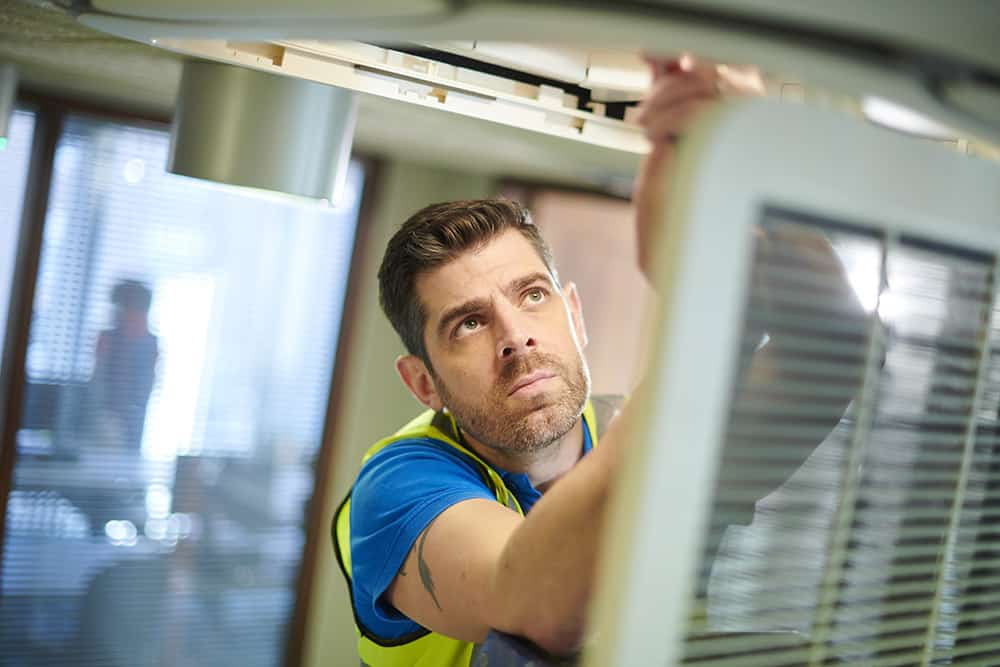What we have seen over the past two years at the annual AHR Expo is that new construction is a theme that continues to come up. Competition has continued to increase across the industry but the trend that continues to drive the industry is new installations of high energy-efficient products. Heading into this year’s AHR Expo in Orlando, which also starts a new decade for the HVAC industry, environmental topics continue to be one of the main factors in consumer choices. That has led many to retrofit their entire HVAC system with these new, green, energy-efficient systems.
Here is how the industry is shaping up heading into this year’s show.
New construction is half the HVAC industry
When you consider that every building has some form of HVAC system, it shouldn’t be surprising to hear that new construction and installation makes up over half the segmentation of the HVAC industry. More than maintenance, refrigeration installations, and replacement combined, new installations are 50.8% of the industry share. As IBISWorld’s report states, “National standards for energy efficiency are projected to encourage building owners to upgrade to more efficient systems.”
As the national standards for energy efficiency increase, demand for updated systems grows as well. And with rising costs of electricity amongst businesses and homeowners, the need for energy-efficient systems is growing. With a stable economy and lower interest rates, more businesses and homeowners are taking the opportunity to upgrade old systems and replace them with new, greener models. Businesses were given tax credits if their new system met government standards, even though they came at a great significant cost. The tax credit would then reduce the amount they would pay.
All of these factors have increased demand in new HVAC systems. IBISWorld says that private, nonresidential construction is forecast to have an increased rate of 2.5% over the next five years. Which makes it one of the most profit areas for HVAC businesses to focus in the future.
Small Business growing a foothold
Due to this growing demand in new construction, the amount of small businesses that specialize in regions and local markets is growing. Mainly focused on installations, the demand is there for new systems that are being met by small business HVAC companies, which has helped to increase the number of professionals in the HVAC industry. The industry still relies heavily on in-house technicians to conduct installations and maintenances services, but subcontractors are routinely being brought in to help with basic repairs and supplement technicians in a worker shortage situation.
It’s expected over the next five years that due to the demand for these new systems, accelerated construction markets in both residential and nonresidential markets, the industry is seeing a growth period where more technicians are needed to fill the void. Small and medium businesses in the HVAC industry are now starting to take a firm foothold in local markets to meet the demand customers have for new systems. And some are expanding service beyond typical installations to include preventative maintenance and on-call emergency repairs.
Furthermore, the need for automation systems is also growing, as field service teams try and handle the increased demand from all areas of the HVAC industry. That includes using field service software, the Internet of Things (IoT) and mobile field service apps to help reduce repair times and become a more efficient business.
The major markets of the HVAC industry
In 2018, according to IBISWorld, the single-family home was the largest market for the HVAC industry at 25.6% of the share. New incentives, more environmentally friendly green machines that use lower amounts of electricity helped fuel that part of the market. And with new housing starts continuing, the demand will continue to rise for more HVAC installation. The value over five years up to 2018 increased by 4.7% for the residential industry. Private spending on homes also increased, and HVAC was one of the primary areas in which homeowners were looking to improve.
The industrial and office building market was second at 12.7% of the market share in the HVAC industry in 2018. The number of US businesses continues to increase, meaning more installation for HVAC businesses. Office buildings and the retail and storage spaces followed at 11.6%, followed by healthcare and public safety buildings at 10.4%. All of these include malls, schools, hospitals, courts, prisons, police stations and commercial space for business. Although it is expected that health and public spaces will decline as new builds have already been completed and that part of the market turns to maintenance.
The increased demand for field service software
What has been noticed at AHR and around the industry is the demand increase for field service tools that automate the HVAC industry. More HVAC businesses are turning to field service software for their scheduling and dispatch, route optimization, mobile field service apps and work order management. And with the increase in constructions and installations, the demand for better project management and job costing systems is also increasing. It’s now more important than ever to plan accordingly for all installations to execute them as quickly as possible in a very competitive landscape.
Field service software is increasing its ability to meet demand with enhanced tools for work order management and mobile app solutions. And what many small business owners are looking for is a system that can scale up with their business. A field service software that is able to be integrated with other systems they have already, such as accounting, CRM and ERP systems. So, it’s no longer about buying one system, but rather, working with a partner that can see their entire needs and look at it holistically. As the industry grows and continues to change, investment in field service software is going towards the companies that can change with the HVAC industry.

